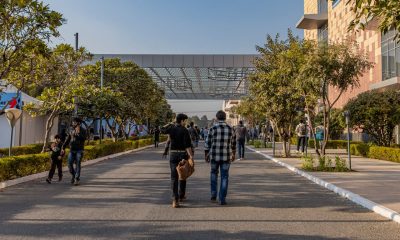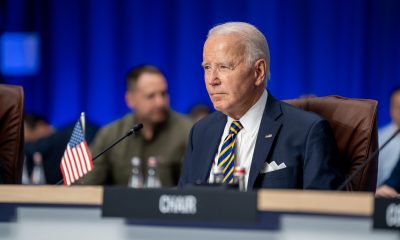Headline
Most countries in plane search effort reluctant to discuss costs; ‘good training,’ expert says
BANGKOK, Thailand – It’s not a question most governments involved in the hunt for the Malaysia Airlines Flight 370 care to answer: How much has the far-flung, month-long search cost?
The U.S. bill alone has run into the millions of dollars, and some countries such as China have devoted more ships and planes to the effort than the Americans have. Australia is spending more than half a million dollars a day on just one of the ships it has in the Indian Ocean.
But governments and military experts say it’s difficult to come up with a full estimate for an ongoing search, especially since many of the costs are a normal part of maintaining effective search-and-rescue capabilities.
“If I listed how many planes and boats are involved, I could confect a very large number, but it wouldn’t have much meaning, because we’ve got to pay for the boats and the planes and the pilots and the sailors anyway, and they’re out there doing some stuff which is good training and reflects well on us internationally,” said Mark Thomson, senior analyst of defence economics at the government-funded Australian Strategic Policy Institute.
More than two dozen countries have played some role in the long search, which Malaysia is overseeing. In the days since the search has shifted to remote areas of the Indian Ocean, several countries have deployed planes and ships for the effort, including China, Australia, Malaysia, the U.S., Britain, New Zealand, Japan and South Korea. On Monday, nine military planes, three civil aircraft and 14 ships were combing a 234,000-square-kilometre (90,000-square-mile) search area, according to Australian officials co-ordinating the search.
Malaysia has repeatedly declined to answer questions about the cost of the search.
“Nobody, not the Malaysian government, none of our partners, have talked about dollars and cents. It’s all about trying to find the aircraft,” Defence Minister Hishammuddin Hussein said at a press conference last month.
The U.S. Department of Defence allocated $4 million to help search for the missing Malaysian jetliner. Between March 8 and March 24, it had spent $3.2 million, said spokesman Col. Steve Warren. As of late last week it had spent another $148,000. The Pentagon has allocated another $3.6 million to cover the cost of a towed pinger locator, used to detect underwater signals from aircraft black boxes, and an underwater autonomous vehicle, which can look for wreckage deep below the ocean surface.
Australia’s defence department said its direct cost of using its ship the HMAS Success in the search is about $550,000 per day, and another vessel, the HMAS Toowoomba, costs about $380,000 per day. But it said there are not only direct costs such as fuel, servicing and crew salaries, but indirect costs such as general administration, building costs and depreciation of aircraft assets, so it is difficult to provide an exact total.
Several Chinese ships and planes have been involved in the search, but China’s foreign ministry did not respond to questions about the expense of the effort.
Geoff Davies, a spokesman for New Zealand’s defence force, said much of his country’s costs will be covered by the existing budget for search and rescue operations, though there are likely to be some extra costs because of the extraordinary nature of the search.
Japan’s defence ministry said it could not provide a figure because the search is continuing. The cost of the search operation is believed to fall within the 880 million yen ($8.8 million) budgeted for emergency relief for the Japan International Cooperation Agency. Extra costs incurred by the operation include fuel and a special allowance for the roughly 90 troops involved. Some Japanese civilians are also participating, and the government said their accommodation and transportation has cost about 28 million yen ($280,000) as of the end of March.
Accommodation for the Japanese troops is free, as they use facilities at the Australian military under their defenceco-operation agreement.
___
AP writers Rod McGuirk in Canberra, Australia, Eileen Ng in Kuala Lumpur, Malaysia, Robert Burns in Washington, Mari Yamaguchi in Tokyo and Nick Perry in Perth, Australia, contributed to this report.






















